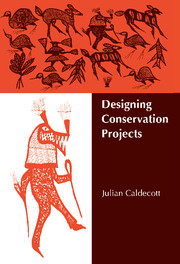Book contents
- Frontmatter
- Contents
- Foreword by Daniel H. Janzen
- Preface
- Acknowledgements
- 1 Introduction
- 2 Baram River, Sarawak
- 3 Cross River, Nigeria
- 4 Siberut and Flores Islands, Indonesia
- 5 Forest fragments in China and the Philippines
- 6 Costa Rican linkage projects
- 7 Irian Jaya, Indonesian New Guinea
- 8 Project themes and practicalities
- 9 Options for conservation
- 10 Options for development
- 11 Options for changing people's minds
- 12 Summary and conclusions
- Glossary
- Bibliography
- Index
10 - Options for development
Published online by Cambridge University Press: 04 February 2010
- Frontmatter
- Contents
- Foreword by Daniel H. Janzen
- Preface
- Acknowledgements
- 1 Introduction
- 2 Baram River, Sarawak
- 3 Cross River, Nigeria
- 4 Siberut and Flores Islands, Indonesia
- 5 Forest fragments in China and the Philippines
- 6 Costa Rican linkage projects
- 7 Irian Jaya, Indonesian New Guinea
- 8 Project themes and practicalities
- 9 Options for conservation
- 10 Options for development
- 11 Options for changing people's minds
- 12 Summary and conclusions
- Glossary
- Bibliography
- Index
Summary
Introduction
The main task in managing a nature reserve is to ensure that people intrude on the reserve only as staff, visitors, and authorized harvesters, and that little harm is done when they do so. More serious threats to reserves come from outside, in the form of competing demands on resources both planned and unplanned. These include officially approved industrial exploitation, conversion or infrastructure development within the reserve, as well as informal encroachment, colonization, and open-access harvesting there. To relieve them, a project must extend its area of interest beyond reserve boundaries, and seek to neutralize the causes of threats where they originate.
Those parts of a project area which are outside a reserve thus give rise to the most complex social, economic and political problems. These are often the most difficult and expensive to solve, but when solved they contribute most to the long-term security of the reserve. For design purposes, a project area outside a reserve can be divided into different zones, which will allow zone-specific issues to be identified and their solutions planned and budgetted. One important kind is that of the buffer zone, but others occur under various names according to their purpose. Because all these zones are outside the nature reserve, they cannot usually be controlled by reserve managers. Instead, their management will depend on agreements being negotiated with and implemented by local people and other interest groups.
- Type
- Chapter
- Information
- Designing Conservation Projects , pp. 201 - 221Publisher: Cambridge University PressPrint publication year: 1996

